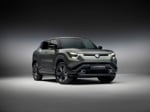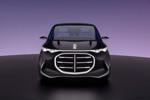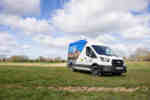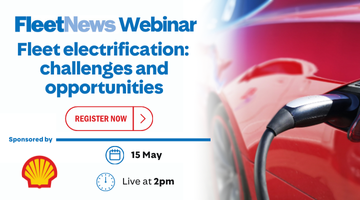The dramatic five-year period of takeovers, mergers and joint ventures that has left just six major manufacturers dominating the global car industry will never be repeated.
There may be one or two mega-deals to come, but we now have a fairly clear idea who will be controlling the industry for the next few decades: General Motors/Fiat, Ford, Volkswagen, DaimlerChrysler, Renault/ Nissan and Toyota.
There are still a few heavyweight companies who have managed to evade the rush - PSA/ Peugeot-Citroen, Honda and BMW to name three - but most of the big deals have already been signed.
Of those six giants, five are in the process of trying to make their new organisations work. The priority for most of them is to cut purchasing costs, and to merge areas of the business that the customer never sees, in such areas as finance, administration, and back-office retail operations.
But other areas of the business are less easy to assimilate. DaimlerChrysler is refusing to move ahead with any major platform-sharing strategy because it does not want to weaken its prized Mercedes-Benz brand.
Other manufacturers are unwilling to bring dealer networks together, despite the savings that might deliver.
But what about the fleet business? Does it make sense for a multi-make manufacturer to offer all its brands as part of a revised fleet offering, or should brands be kept separate to battle against each other in the market?
Unsurprisingly, the market leaders have different answers to this question. Volkswagen is in the middle of launching its new multi-brand fleet operation, giving pan-European fleets the chance to buy VWs, Audis, SEATs and Skodas as part of a single deal.
Although it is hardly advertising the fact, Ford's Premier Automotive Group is moving towards a structure that will see Volvo, Jaguar and Land Rover not only offered together in fleet deals, but sold alongside each other at luxury dealer parks.
But Fiat Auto managing director Roberto Testore is adamant that Fiats, Alfa Romeos and Lancias will never be sold with Opels or Vauxhalls as part of the same pan-European deal with partner GM.
With a host of fleet-friendly models in the pipeline, Fiat Auto has high hopes for a major upturn in fleet sales over the next few years, but Testore says that Fiat and Opel/Vauxhall will remain fierce competitors in the market.
'We will never merge our fleet departments,' he told Fleet News Europe. 'Our arrangement with GM is very simple. We have two full joint ventures - in powertrain and purchasing - and outside that there are no hidden elements.
'Both joint ventures are working very well. We are achieving excellent industrial synergies and economies of scale. The alliance with GM is better than foreseen in every way.
'But we are in competition with GM brands in the market - so we would never do anything to change that. We will not, for example, merge distribution networks. We will not merge our fleet sales departments. There is no cultural takeover from one side - we measure how well the joint ventures are doing in financial terms.'
And, at the moment, that clear policy appears to be paying dividends. Costs are coming down, while confidence in the GM/Fiat relationship is rising.
Eighteen months ago, few would have predicted as much. Fiat was warned that slow-moving, monolithic GM was ill-prepared to take on the real movers in the automotive world like Ford and DaimlerChrysler. V Indeed, many investors thought Fiat's future interests could be best served by selling out to DaimlerChrysler.
After hearing that Fiat had bought a 5.9% stake in GM, while the American giant had taken a 20% share of Fiat, a leading German automotive analyst said: 'This is a poor deal. It does little to add value anywhere. No real shareholder value is being created, and the strategic logic behind the deal is tortuous at best.'
It went against perceived wisdom that only acquisitions or full mergers could provide the correct structure for carmakers to compete effectively in the global market.
But the deal appears to be thriving because things have been kept simple. The joint purchasing operation has already saved GM Europe an impressive half a billion euros, while Fiat has said synergies with GM will save it €200 million this year.
Sluggish European and South American markets have failed to stem rising confidence at both manufacturers.
However, it is clear that the relationship between Fiat and GM will extend past the current limits. GM will start building the Alfa 156 in Thailand at a plant where it has spare capacity, and back-office functions like retail financing will also be brought together.
Platform sharing, of course, is being considered for a variety of models, but Fiat insists that it will not attempt to integrate manufacturing operations with GM.
It would be surprising if most Fiat and GM models in the minicar, supermini, lower medium and upper medium segments did not share platforms post-2005.
It would be surprising if GM did not seek to gain from Fiat's spaceframe knowledge, or if Fiat did not seek help from GM to reintroduce Alfa and perhaps Lancia to North America. The companies will inevitably get closer.
The partners see technology sharing as central to their alliance - as long as it brings substantial cost savings, without harming the brands' competitiveness in the marketplace, and without the necessity for joint manufacturing plants.
Richard Gadeselli, head of corporate affairs for Fiat Group in the UK, says: 'Everything the two partners do is easy to assess. It all comes down to money. It is easy to identify savings, put a figure on them and then make a decision to proceed.'
And at the moment, that means it makes sense to keep Fiat and GM's fleet departments separate. With the 2003 launch of a new D-segment car, Fiat will have a full fleet model range alongside the Seicento, Punto, Stilo, and a four-strong minivan range.
Fiat believes that with these cars, it can perfectly well compete in the cut-throat European fleet arena against anyone - and that includes Opel and Vauxhall.
New minivans a vital element of fleet expansion plans Fiat Auto will add two more minivans to its range as part of a dramatic expansion of its fleet offering over the next three years.
On top of the radical six-seat Multipla and the larger Ulysse, Fiat is developing new smaller minivans based on the new Stilo and the Punto supermini. The four models are likely to give the Italian manufacturer the largest minivan range of any European manufacturer.
A major new initiative with partner General Motors will also see new generations of Alfa Romeos and Lancias target the upper end of the fleet market.
'Our platform strategy will allow us to bring lots of new niche and volume models to the market,' said a Fiat spokesman. 'We are very excited about the new Stilo and its hybrid platform, which will generate a number of new models in different body styles.'
These will include a Stilo station wagon in addition to three- and five-door hatchbacks, and the MPV.
Below this, a Punto-based minivan will debut in 2003. The current Punto platform will also spawn a replacement for the Lancia Y next year.
As a group, Fiat will launch 19 completely new models by the end of 2005 at a total cost of €14 billion.
Among them will be a proper D-segment replacement for the Croma, which will allow Fiat to compete head on with the Opel Vectra, Renault Laguna and Ford Mondeo.
Most of those 19 model programmes are too advanced to share platforms with new partner GM.
The only model to have definitely been transferred from a Fiat to a GM platform in the meantime is the Croma replacement - Fiat's new D-sector car.
This was to have been based on Fiat's 'New Large' structure and launched as late as 2005, but the car will now be based on GM's Epsilon platform, and launched in 2003. The New Large platform has been killed off.
The next mainstream range to be evaluated for a shared platform is the 2005 Punto replacement. This looks certain to be based on the same underpinnings as the next Opel Corsa, although no decision has yet been made as to whether those will be Fiat or GM-sourced.
However, Fiat and GM are in the process of setting up a 'premium car architecture' operation in Sweden to produce Saabs, Alfa Romeos and Lancias of the future.
The mainstream Fiat and Opel brands are excluded from the co-operation, as are Cadillac and GM's Australian brand Holden.
The venture will give all three brands a huge lift in their attempts to take on BMW, Mercedes-Benz and Ford's Premier Automotive Group.
Products on the Premium Architecture platform could be built at any of GM's factories around the world that are being prepared to make the new Epsilon platform.
But insiders say this does not mean they are directly borrowing the Epsilon platform itself. Epsilon will be used for the upcoming Opel Vectra, Saab 9-3 and a series of US-built cars.
The initiative will help Fiat reach its goal of doubling Alfa sales to almost 500,000 units and increasing Lancia sales to 300,000 a year by 2005. (September 2001)
















Login to comment
Comments
No comments have been made yet.